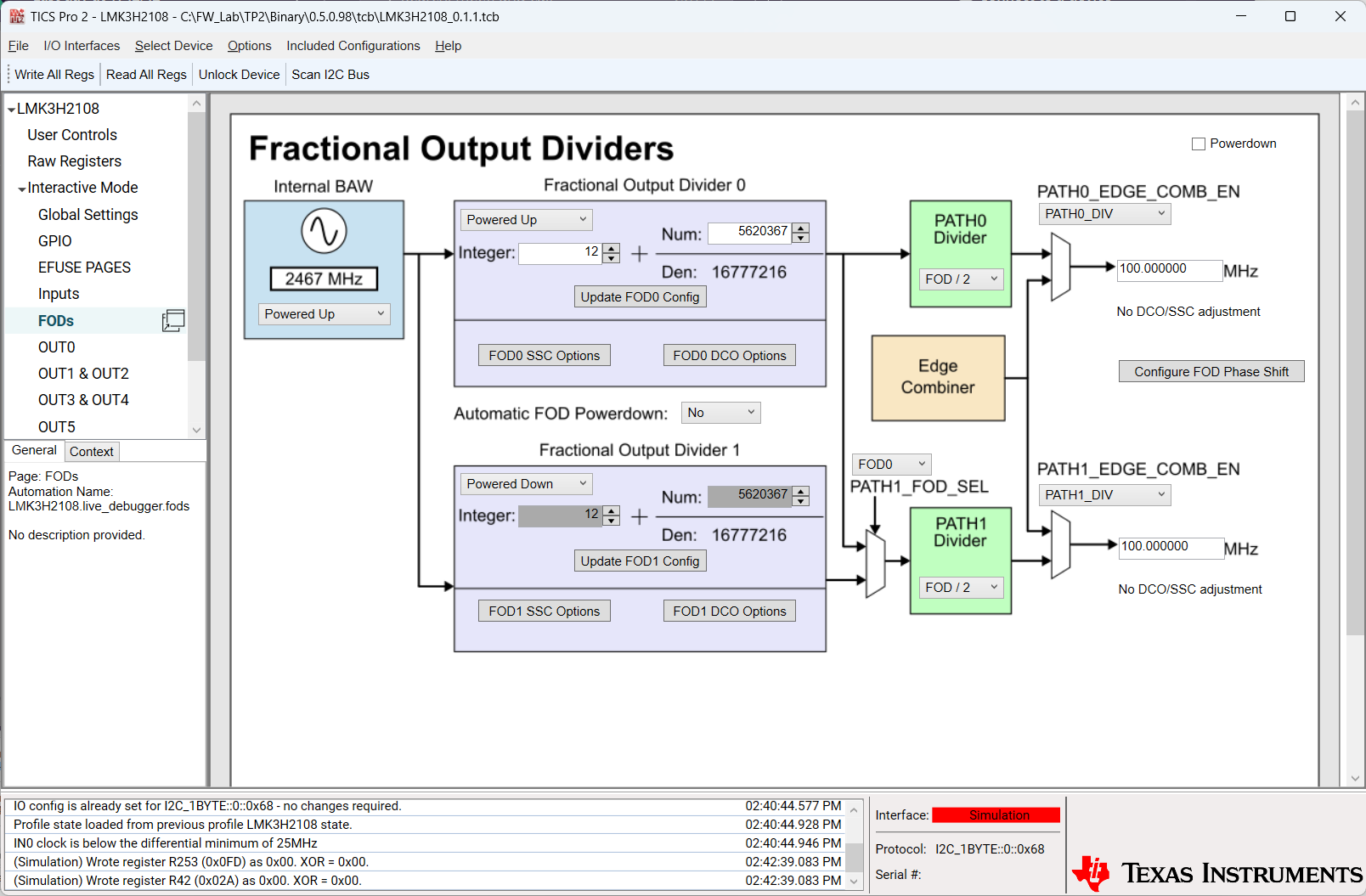SNAU309 October 2025 LMK3H2108
3.2.6 FODs Page
 Figure 3-6 LMK3H2108 FODs Page
Figure 3-6 LMK3H2108 FODs PageThe FODs page allows for setting the FOD0 and FOD1 divider values. Each FOD has a path post-divider, allowing for the generation of frequencies between 2.5MHz and 200MHz after the post-divider. If the edge combiner is selected in place of the FOD post-divider, then frequencies between 200MHz and 400MHz can be generated. When either path selects the edge combiner, then the FOD1 divider values are ignored by the LMK3H2108, and both FODs use the FOD0 divider values.
The text-box to the right of each FOD post-divider allows for automatic calculation of the FOD divider values. Users have the option to select from each possible combination of FOD frequency and post-divider value for frequency generation. If the frequency cannot be generated, the box turns red, and an error message appears in the status bar. If the frequency requires usage of the edge combiner, then both frequency boxes are updated accordingly without the selection pop-up. If the FOD divider selection for the PATH1 frequency results in the same values as the FOD0 divider values, then FOD0 is automatically selected as the source for PATH1.
FOD and FOD1 both provide the option for Spread Spectrum Clocking (SSC). Four preconfigured SSC options are available, in addition to custom SSC options. The preconfigured SSC options are optimized for an FOD frequency of 200MHz. The custom SSC can be used with any FOD frequency. The GUI automatically calculates the values for the SSC_STEPS and SSC_STEP_SIZE fields when a value is entered for the SSC depth. Changing the modulation type between down-spread and center-spread also recalculates these values.
Both FODs support digitally-controlled oscillator (DCO) mode for adjusting the FOD frequency in terms of PPM adjustment. Once a PPM step is entered, the Up and Down buttons for each FOD increment or decrement the total PPM shift. If the edge combiner is used, then SSC and DCO must not be used.